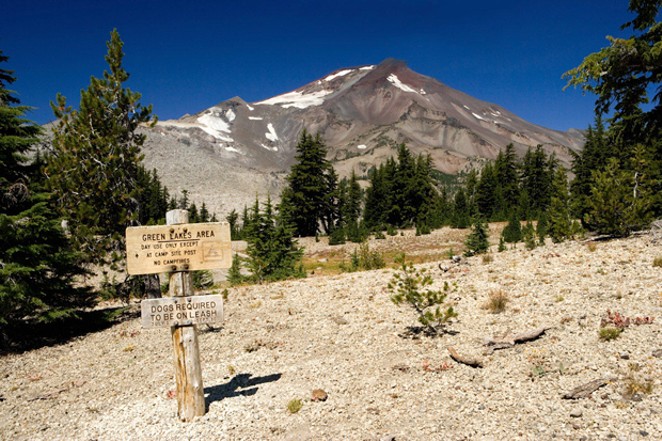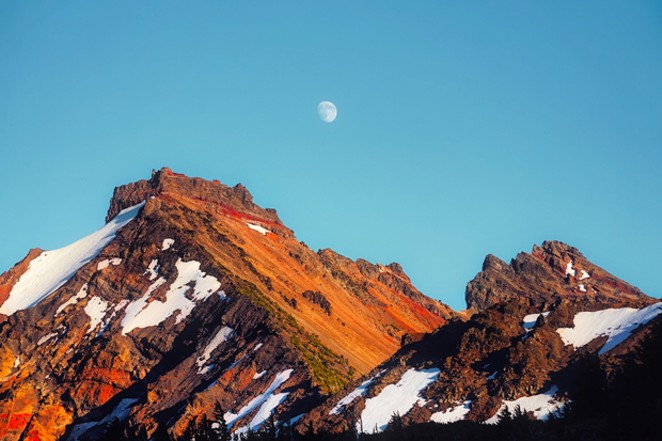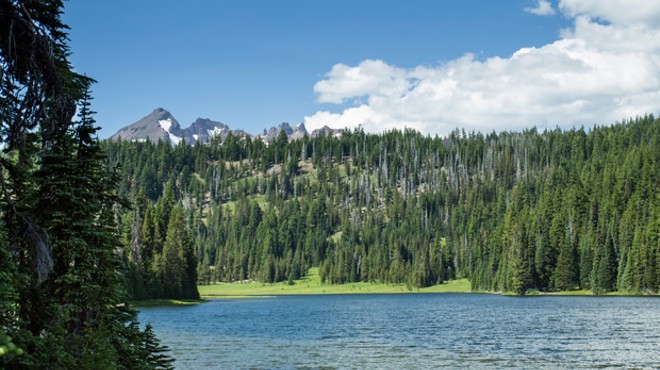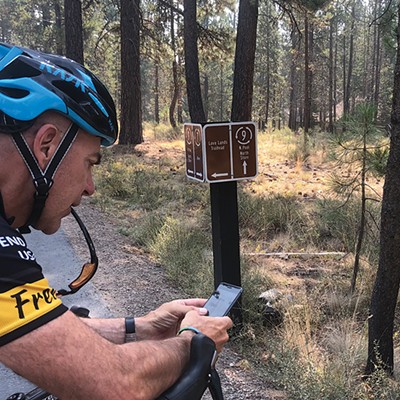Many are happy to see 2020 in the rearview mirror. With a raging coronavirus pandemic, a contentious election, devastating wildfires, a crashing economy and stay-at-home orders, it was a no-brainer that when the light turned green, explosive recreational use would follow. Recreating and being out in nature was about the only game in town, so how did this "quintafecta" influence trails in Central Oregon?
"Initial figures show that we had about a 40% increase in visitor use this year," said Jean Nelson-Dean, public affairs officer for the Deschutes National Forest. "In 2018, we did a formal survey of visitor use, which showed we have 3.3 million visitors a year to the Deschutes National Forest. If we look at a 40% increase of 3.3 million visitors, it was a phenomenal level of recreation use, which certainly overwhelmed our ability to serve all those visitors and did have impacts to the natural environment."
A combination of increased visitor use, coupled with single-occupant cars, easily overwhelmed Central Oregon trailhead parking lots in 2020. Initially, campgrounds saw heavy use, but without trash service or restroom maintenance—and especially when they opened for reservations—were quickly filled by locals and visitors alike seeking solace and sanctuary.
"Last year, as we began dealing with the pandemic, we had no 'play book' and our primary focus was to protect our employees and our volunteers from exposure to COVID-19," added Nelson-Dean. With staff working remotely and limited field crews, the Forest Service also postponed volunteer group activities for most of the season.
Though some volunteers were able to get out by mid-July, their numbers were limited by COVID-19 precautions. Coupled with some of the seasonal trail crew being switched over to fire duties because of budgetary restraints, the trails lacked early-season maintenance by the volunteer trail crews.
"A lot of the wilderness trails didn't get logged out as early as they usually do," said Richard Nix, board president for Friends of the Central Cascades Wilderness board. "Another thing that I noticed, especially on the narrow trails, was that when you met someone on the trail coming the other way, everybody was stepping off to the side of the trail, effectively widening the trails in some cases." Nix's group received permission from the Forest Service in September to resume cleaning up backcountry campsites and installing trails signs.
A side tangent to the crowded parking lots was that there weren't parking spaces for the equestrian backcountry riders to park their trailers, forcing them to find another parking lot that could accommodate their rigs. Inadvertently, the crowded parking areas pushed users into other less-traveled areas of the forest, increasing the spread of impacts to different areas.
So how much did the lack of volunteers impact the local forests? "We have the second-largest volunteer program of any national forest in the United States," said Nelson-Dean. "On average we have over 2,500 volunteers annually who contribute over $1 million worth of work to maintaining primarily recreation assets, but also do other work for us. If it wasn't for the tremendous work of individual and group volunteers, we would not be able to maintain our 2,000+ miles of trails on the Deschutes NF."

Deschutes Trails Coalition
Back in 2017, to address the rising recreational use on public lands, the Deschutes Trails Coalition, a group of over 30 partners that span the realm of tourism, businesses, corporations, environmental groups, user groups, community partners and land use agencies, formed.
"The Forest Service brought the DCT together in the first place at the behest of then Forest Manager John Allen," said Danielle MacBain, DTC executive director. "He was the one who brought the initial groups together to get input on sticky issues around trails and recreation." The USFS was getting input on issues from a variety of sources—sometimes in conflict between different user groups. With creation of the DTC, the groups could hash out issues together, then proceed forward with more of a cohesive approach.
"We work in a collaborative effort to work on sustainability issues for trails," added MacBain. "Our sustainability goal is more holistic than just the physical aspect, but includes economics, social and environmental factors when we consider the work we do." The DCT is not an advocacy group for adding trails, rather having "smart trails" that exist on the landscape which meet these sustainability criteria.
With numerous voices represented, the Coalition looks to add partners and hopes that will include an elected representative among the Deschutes County Board of Commissioners, something the group has been working on for a while, who will also represent the County at these meetings.
The DTC's Small Project Grant Program is funded by its $1 for Trails program, as well as from the mobile donations received through Pledge for the Wild—a nonprofit co-organized by Visit Bend in partnership with other western mountain towns that promote responsible outdoor recreation.
Central Cascades Wilderness Permit System Goes Online
Last year, both the Deschutes and Willamette National Forests put on hold implementing the Central Cascades Wilderness Permit System, created to protect natural and cultural resources as well as the visitor experience by limiting entry at different trailheads in the Three Sisters, Mt. Jefferson and Mt. Washington wilderness areas. Using last season as a barometer, the Forest Service decided to go ahead with implementation of a limited-entry permit system this year from May 28 to Sept. 24. Users will be able to obtain a day-use or overnight permit starting April 6, online through Recreation.gov. A portion of the permits will be issued in advance throughout the whole season, while others will be available seven days prior to the departure date.Though not all the DTC partner groups agree on the permitting system, they did agree that there was a need to address increased recreational use.
Using last season as a barometer, the Forest Service decided to go ahead with implementation of a limited-entry permit system this year from May 28 to September 24.
tweet this
"We've worked really hard internally to figure out how we are going to proceed with 30-plus partners," said MacBain. She acknowledges that the groups don't always agree, nor do they always agree with the actions the land management agencies take, but the two-way conservation is key to sustaining the ecological and social integrity of a regional trail system while maintaining protection for wildlife and a quality experience.
Many are excited to see 2021 out the front windshield. There's hope on the horizon—and that means trail projects and volunteer activities are likely to resume at some point in time, an important point for not only the ecology of the forest but also the volunteers' spirits.
"We have learned many things over the past year, and it is our hope to have volunteers return to supporting us as soon as it is safely possible," said Nelson-Dean. "We cannot maintain all our recreation assets on the Deschutes NF if it wasn't for our volunteers. If you know someone who volunteers for the Deschutes NF, please say thank you!"
Centralcascades.org
Fs.usda.gov/detail/deschutes
Deschutestrailcoatlition.org
Pledgewild.com

























